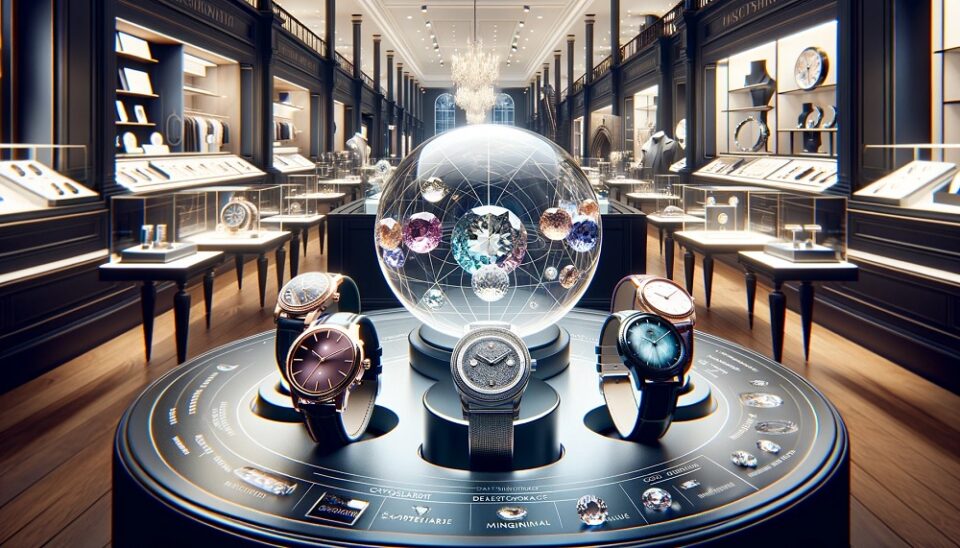When it comes to selecting the perfect timepiece, the focus often lands on brand, design, or mechanism. However, an equally important aspect that demands attention is the watch crystal – the transparent cover that protects the dial. Understanding the different types of watch crystals can significantly enhance your shopping experience, ensuring you make a choice that’s stylish and practical.
Types of Watch Crystals
1. Sapphire Crystals
Renowned for their durability and scratch resistance, sapphire crystals are a top choice for luxury watches. They’re made from synthetic sapphire, offering clarity and robustness but at a higher price point.
2. Mineral Crystals
These are more affordable than sapphire and are made from heat-treated glass. Mineral crystals offer decent scratch resistance but are more susceptible to impacts compared to sapphire.
3. Acrylic Crystals
Found in vintage and budget-friendly watches, acrylic is lightweight and can be effortlessly polished to remove scratches. However, it’s less scratch-resistant than its counterparts.
Choosing the Right Crystal
When shopping for a watch, consider your lifestyle and usage. A sapphire crystal could be the best bet if you’re involved in activities where your watch might take a few knocks. On the other hand, acrylic or mineral options might be more suitable if you’re after a vintage look or have a tighter budget.
Maintenance and Care
Regardless of the choice, maintenance is key. Even the toughest watch crystals require care. Sapphire crystals, while scratch-resistant, can still shatter upon impact. Regular cleaning and careful handling can extend the life of your watch crystal, no matter the type.
Aesthetic Appeal
The choice of crystal also impacts the watch’s aesthetics. Sapphire crystals offer a more transparent and more unobstructed view of the dial, whereas acrylic and mineral might slightly distort or reflect light differently. This can influence the overall look and feel of the watch on your wrist.
Cost Considerations
It’s important to balance quality with cost. While offering superior qualities, Sapphire crystals can drive up the watch’s price. Mineral and acrylic options provide a budget-friendly alternative without significantly compromising on style and durability.
Final Thoughts
In conclusion, choosing the proper watch crystal balances durability, style, cost, and personal preference. Whether you opt for the scratch-resistant sapphire, the affordable mineral, or the vintage acrylic charm, each type has its unique appeal. By understanding these differences, you can make an informed decision that aligns with your style and needs, making your watch shopping experience both enjoyable and rewarding.
Remember, the crystal is not just a protective layer; it’s a key component that defines the character of your timepiece. Happy watch shopping!

